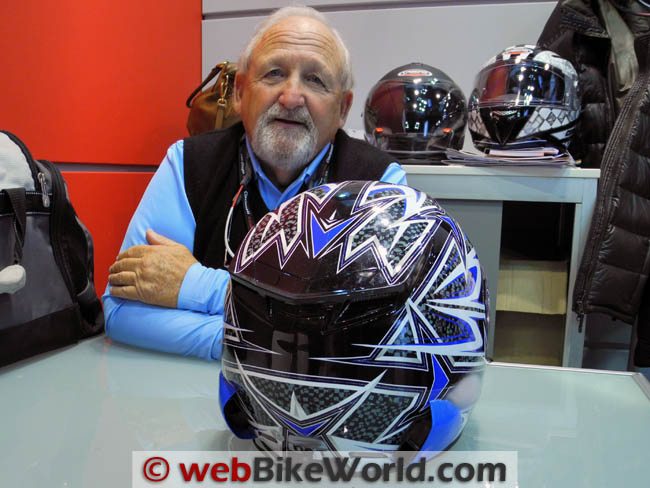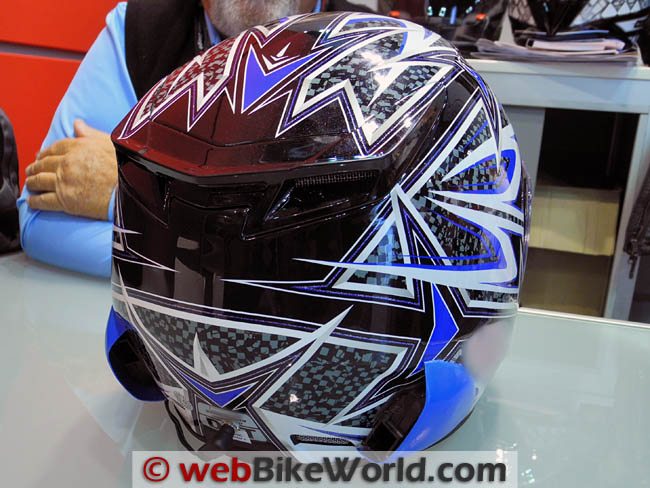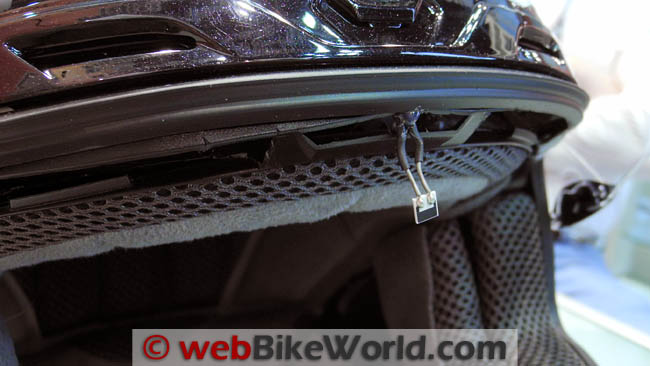Haber Helmet Ventilation System
HAFT: Haber Air Flow Technology
Remember the AFX FX-11 “Lightforce”?
I didn’t think so. Nevertheless, it was a good idea — perhaps slightly ahead of its time.
The FX-11 featured an on-board battery system that powered a light and an internal fan. The idea was that the fan pulled air through the helmet for ventilation.
It didn’t quite work as expected, but the concept was valid. With today’s super-lightweight Li-Ion batteries, we may be on the verge of a ventilation revolution for motorcycle helmets.
I ran into Steve Haber at the Caberg Helmets booth, of all places. Haber is the founder of Bollé sunglasses and now runs Habervision, making and selling “The finest polarized sunglasses in the world”, along with the Haber Eliminator, “The world’s only automated no-fog fan goggles”.
The goggles have a tiny fan triggered from a built-in humidity sensor. When the humidity level inside the goggles rises, the fan kicks in and the powered ventilation system de-fogs the lenses.
Haber has applied the same technology to motorcycle helmets. He had a very early stage prototype to show me, and the system is being marketed to motorcycle helmet manufacturers to build it into a new helmet design.
When the system is switched on, the sensor turns on the variable speed fan to pull air through the chin bar, up across the back of the face shield and out the back of the helmet. The ventilation is really strong — or as strong as you want it to be — because the rider can adjust a rheostat to control the fan speed or override the humidity sensor.
It’s like riding at 50 MPH without a helmet — while standing still. Or, a gentle tropical breeze pulling a barely noticeable amount of air through the helmet. At full chat, there is a lot of air moving through the helmet; way more than any unpowered helmet could be at any speed.
HAFT appears to have a lot of potential, and with a go-getter like Steve Haber behind it, we may see a system in production sooner, rather than later. In the meantime, we’d like to know what you think about this idea. The U.S. is a primary market for this type of product, due to the extreme temperatures, from severe fog prevention requirements in the north to helmet ventilation and cool-down requirements in the steamy south.
Haber is planning on licensing the technology to helmet manufacturers and helping them incorporate the system into their helmets.
Reminder: This is a very rough early proof-of-concept and testing prototype. The finished product would be completely integrated into the helmet shell. The helmet brand name has been obscured in these photos.



Return to 2011 Powersports Dealer Expo Home – Stay tuned for more!
Owner Comments and Feedback
See details on submitting comments.
From “C.C.” (06/2011): “I do around 300 miles a week in heavy Bangkok traffic using a Nolan N-103. California? Easy compared to Bangkok!!!
Would I like a power ventilated helmet?? Oh yes. The price point for helmets in this part of the world is on the low side with only a small market for the $300+ helmets Perhaps the option of attacking SE Asia with a power ventilated helmet on the $100 – 150 range markets would suit Steve Haber?”



No Comment